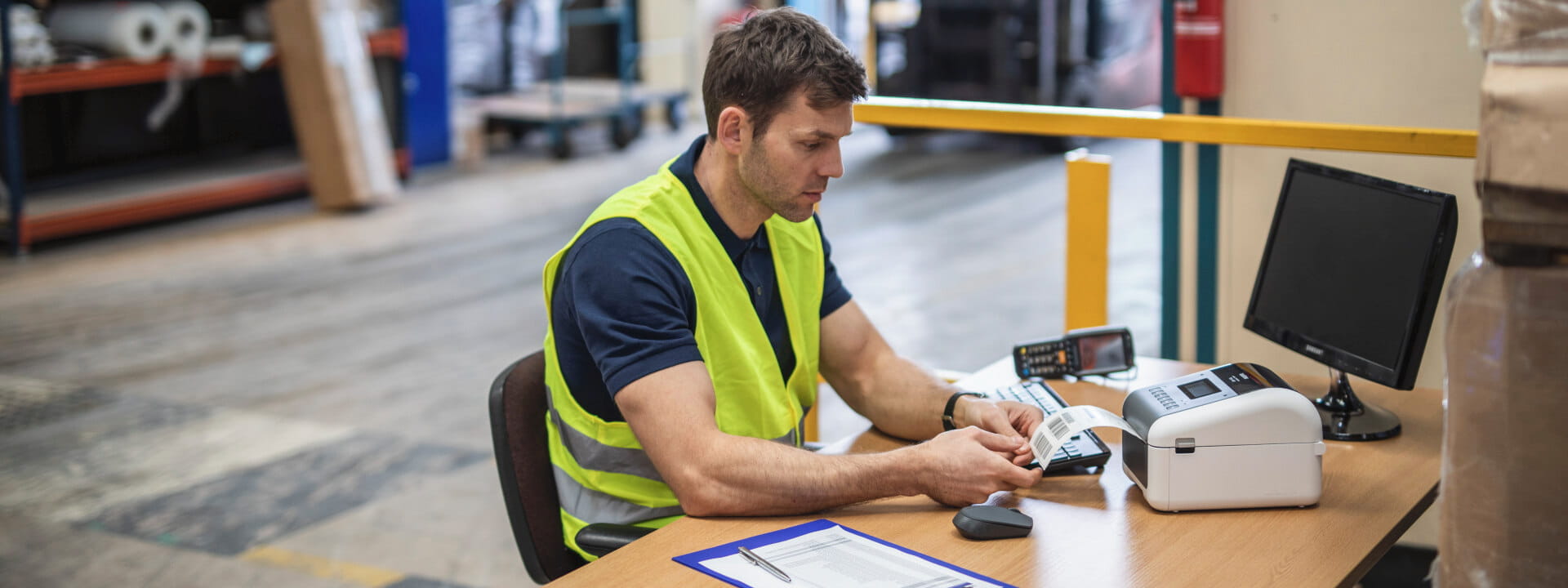
Direct thermal and thermal transfer printing are two different thermal printing methods for producing high-quality labels and other printed media.
Both technologies are great choices for printing barcodes, text and images, but understanding the differences between the two technologies will help you select the ideal label printer for your application.
Whether you're printing shipping labels for an eCommerce business or you're a manager in need of a warehouse labelling solution, thermal print technology is relied upon in many organisations across Australia.
In this guide, you'll uncover the differences between thermal transfer and direct thermal printing, plus discover some handy tips on which type is best suited to a range of labelling applications.
What is direct thermal printing?
Direct thermal printing refers to a method in which the printer uses a thermal printhead that applies heat to create the markings on a label. Direct thermal printing burns images directly on the printed material, and is more sensitive to light, heat and abrasions, making it ideal for shorter term or once-off applications, like shipping labels.
How does direct thermal printing work?
Direct thermal printing works by applying heat to a special type of heat-sensitive material that blackens when heat is applied. It's also important to understand that a direct thermal printer like Brother's TD-4550DNWB does not use any ribbon, ink or toner.
Due to their simpler, ribbon-free mechanics, direct thermal printers are more compact, and most mobile printers use direct thermal technology.
With no ribbon needed to print, direct thermal printers are also easy to operate and have fewer components that can fail. Usually, these printers have a lower purchase price and require less maintenance and repair attention than thermal transfer printers. And while direct thermal labels are slightly more expensive, you don't have to spend money on ribbons.
What is thermal transfer printing?
Thermal transfer printing uses a ribbon process to melt the ink so the image becomes part of the paper or labels resulting in a more durable, long-lasting image. There are more components to thermal transfer printing technology, and it usually comes with a higher upfront price tag and ongoing expenses.
How does thermal transfer printing work?
Thermal transfer printing works by using ribbons made of wax or resin-based ink that melts onto the printing media (i.e. a label or similar), creating a long-lasting, high-quality image. A thermal transfer printer like Brother's TD-4750TNWB uses this technology to deliver unmatched printing quality and durability.
In addition, thermal transfer printers provide the option to use colored ribbons to improve label appearance or to streamline operation with colour-coded labels.
Some thermal transfer printers can also operate in direct thermal mode without the use of ribbons. This can be a good option for smaller businesses that want extra flexibility but do not want the hassle or cost of multiple printers.
Read our comprehensive guide on desktop thermal label printers
Is thermal transfer better than direct thermal?
For short-term applications lasting less than six months, direct thermal printers are the ideal choice. However, when it comes to long-term applications lasting more than six months or if the label will be exposed to extended outdoor use or harsh conditions, thermal transfer printers are the superior option.
To recap on the main differences between direct thermal and thermal transfer, watch the video below.
How long do direct thermal labels last?
In general, direct thermal is best for applications that require a label that needs to last less than six months, such as shipping labels, receipts, tickets, and labels for perishable goods. Direct thermal labels are sensitive to abrasions and exposure to water, chemicals and strong sunlight. Because the label material is heat sensitive, it fades and the label can become hard to read and scan over time.
For these reasons, direct thermal printing is not the best choice for long-term use. By the same token, direct thermal printing still provides a sufficient lifetime for many industry applications.
How long do thermal transfer labels last?
Thermal transfer printing is ideal for long-term applications in which the printing media will be used for more than six months or will be exposed to harsh conditions such as chemicals, light, high temperatures or water. For this reason, thermal transfer printing is great for asset tracking, laboratory specimens and blood bags, outdoor applications, permanent identification, and cold and freezer storage.
Thermal transfer offers a large variety of printing materials, including paper, plastic and polyester. These materials have varying levels of longevity, with polyester being the most durable with the longest lifetime. Label materials can be carefully matched with different types of ribbons for maximum durability.
You may be interested in:
- How a barcode label printer can transform your business
- A guide to portable printers for mobile workforces
- Optimising supply chains with label and mobile solutions
Which thermal printer should I choose?
The most important things to consider when selecting between the two technologies are the required lifetime of the label/printed media and the type of environment to which the label will be exposed.
Because of their unique benefits and drawbacks, direct thermal and thermal transfer print technologies will continue to coexist and be used for different applications within a given organisation. While thermal transfer printers might prove useful for original product marking, direct thermal printers might remain the go-to choice for pick tickets and shipping.
For more information, contact our labelling professionals to help you find the best solution for your business or browse Brother’s range of thermal label printers.





